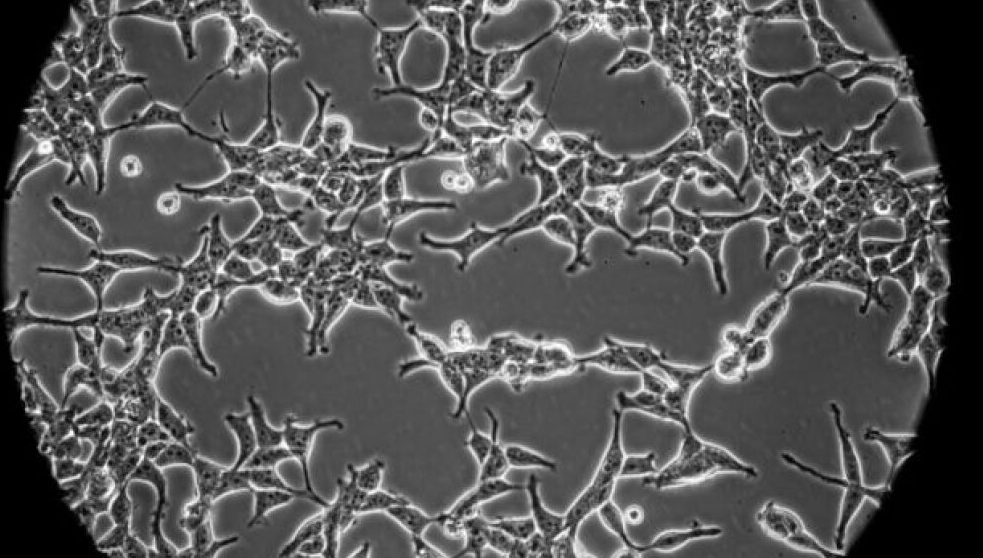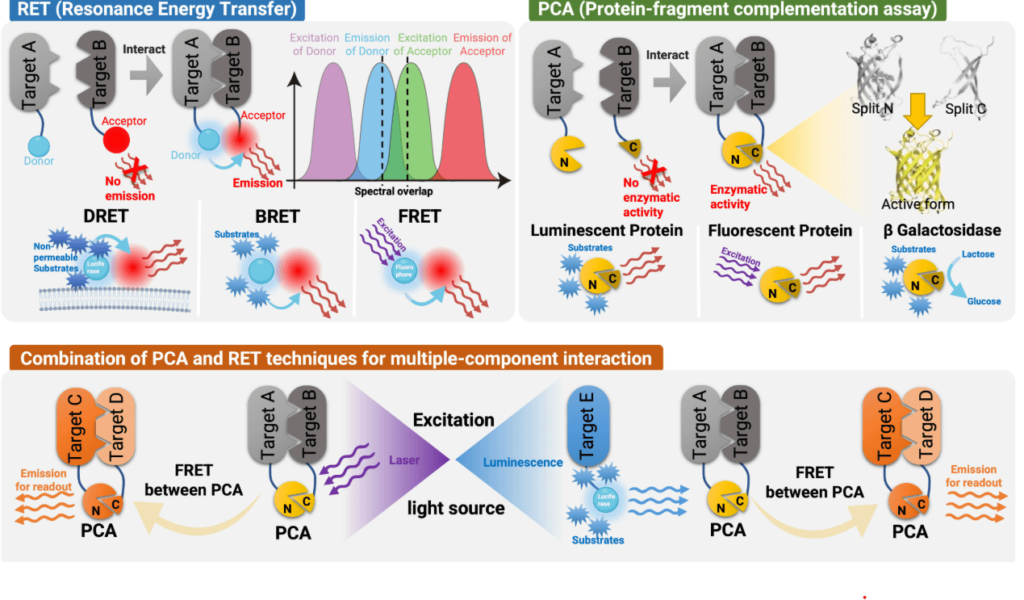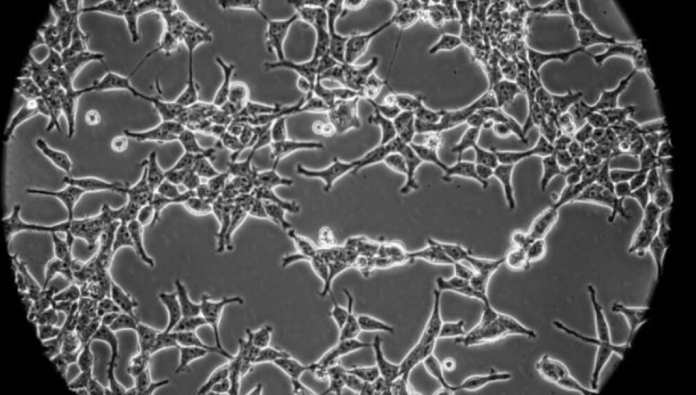In the study of G protein-coupled receptors (GPCRs), the biggest class of membrane proteins and essential therapeutic targets, HEK 293 cells have become an essential tool. These human-derived embryonic kidney cells’ versatility, effective transfection, and strong protein synthesis make them the ideal platform for GPCR expression.
Table of Contents
Introduction to HEK 293 Cells

A popular cell line generated from human embryonic kidney cells, HEK 293 cells have found widespread use in a variety of scientific domains, most notably pharmacology and molecular biology. These cells were first produced in the 1970s as a consequence of viral transfection of human embryonic kidney cells, producing a line of cells that exhibit exceptional stability and adaptability in lab settings. Because of their distinctive qualities, such as their ease of transfection and capacity to adapt to various growing settings, HEK 293 cells are now a vital tool in scientific research, particularly that which focusses on human biological mechanisms. HEK 293 cells provide a biologically relevant platform for testing and investigating human cellular pathways because of their human origin. Because of this, they are frequently used in research requiring results particular to humans, such drug testing and receptor. The main reasons for the extensive use of HEK 293 cells in research are their stability in a variety of experimental settings, compatibility with genetic modification, and capacity for efficient growth under a range of circumstances. They are also appropriate for high-throughput investigations, where reliable and quick protein synthesis is crucial, because to their compatibility with large-scale protein expression. HEK 293 cells are widely used by researchers in gene expression studies, protein synthesis, and particularly receptor biology. In this field, the cells are used as hosts for the expression of several kinds of cell surface proteins, including the very important class of G protein-coupled receptors (GPCRs).
Overview of G Protein-Coupled Receptors (GPCRs)

A vast and varied class of cell surface receptors known as G protein-coupled receptors (GPCRs) are essential for sending information from the outside of the cell to the inside. Numerous ligands, such as hormones, neurotransmitters, and environmental stimulants, can activate these receptors, enabling them to mediate a range of physiological responses. GPCRs are thought to mediate over 80% of cellular signalling in human tissues and are in charge of numerous vital cellular functions, such as immunological responses and sensory perception. GPCRs have emerged as a major area of pharmaceutical study due to their wide-ranging impact on human physiology and participation in a variety of clinical disorders. The therapeutic potential of this receptor family is demonstrated by the fact that more than one-third of all licensed medications target GPCRs. GPCRs are frequently examined in pharmacological research to learn more about their signalling pathways, receptor-ligand interactions, and potential as therapeutic targets. Since many diseases, including as cancer, neurological disorders, and cardiovascular problems, involve dysregulated GPCR signalling, research on GPCRs is crucial to the development of novel treatments. To study these receptors, researchers need effective and dependable model systems. HEK 293 cells are one of the best platforms for expressing and characterising GPCRs because of their human origin and compatibility with transfection.
HEK 293 Cells as a Model System for GPCR Studies
Because of their great transferability, which enables researchers to effectively introduce and express GPCR genes, HEK 293 cells are frequently considered to be among the best model systems for GPCR studies. Because researchers frequently need to look at how different receptors react to different ligands or mutations, this is essential in GPCR research. The high-level production of these receptors is facilitated by HEK 293 cells, which simplifies the measurement of signalling responses and receptor activity. Since GPCRs are complex proteins with sophisticated activation pathways that need a stable and flexible host environment, their capacity to support robust expression is advantageous for research on these receptors. The fact that HEK 293 cells naturally express a number of crucial signalling proteins, including G proteins, is another important benefit for GPCR study. Since they facilitate the transfer of signals from the active receptor to downstream effectors, these proteins are essential for GPCR signalling. HEK 293 cells are useful for studying GPCR signalling because they have endogenous G proteins, which eliminates the need to co-transfect other signalling components. Thus, HEK 293 cells offer an economical and effective way to investigate pharmacological profiles, signalling pathways, and GPCR activity.
Applications of HEK 293 Cells in GPCR Research
Receptor Expression and Characterization
GPCRs are frequently expressed in HEK 293 cells for receptor characterisation research. By using these cells to overexpress GPCRs, researchers are able to thoroughly examine ligand interactions, signalling cascades, and receptor binding characteristics. Receptor activity in HEK 293 cells can be tracked using techniques including radioligand binding assays and fluorescence-based approaches, which offer insights into the behaviour and functionality of receptors. Numerous insights into GPCR pharmacology and the identification of possible therapeutic targets have resulted from the capacity to carefully analyse receptor binding and signalling in HEK 293 cells.
Drug Screening and Pharmacological Testing
High-throughput screening (HTS) techniques are crucial to drug development, and HEK 293 cells make an excellent host for these tests. HTS is utilised in GPCR research to assess sizable libraries of compounds in order to determine which ones interact with particular GPCRs as agonists or antagonists. Because HEK 293 cells are compatible with high-throughput technologies, scientists may quickly evaluate ligand-receptor interactions and find substances that alter GPCR function. This screening feature is essential for finding novel therapeutic options, particularly when GPCRs play a role in disease pathways and tailored treatments are required.
Structural Biology and Crystallography
Drug designers need to understand the structural biology of GPCRs in order to understand the three-dimensional forms of these receptors and how they interact with ligands. GPCR proteins are commonly produced in adequate amounts by HEK 293 cells for structural investigations, including as cryo-electron microscopy and X-ray crystallography. The science has advanced significantly as a result of these structural investigations, which have made it possible for researchers to see GPCR conformations and pinpoint important binding sites. Scientists can study the structural underpinnings of receptor function and create medications that selectively target GPCR conformations linked to disease by using HEK 293 cells to produce GPCR proteins.
Advantages of Using HEK 293 Cells in GPCR Research

HEK 293 cells are popular in GPCR research for a number of reasons. Researchers from a variety of fields can use these cells because they are comparatively simple to cultivate and maintain. Large-scale experiments are made possible by their quick growth and scalability, which is crucial for structural research and high-throughput drug screening. Furthermore, compared to non-human cell lines, their human origin offers a pertinent biological background and more precise insights into human physiology. The capacity of HEK 293 cells to adapt to various growth conditions and genetic changes increases their usefulness even further because it allows researchers to customise the cells to meet particular experimental requirements without sacrificing the reliability of the findings.
Limitations and Considerations
HEK 293 cells have drawbacks in spite of their benefits. Compared to primordial cells, they lack metabolic competence, which is one of their main limitations. Directly produced from human tissues, primary cells display physiological reactions and functions that are similar to those found in vivo. However, being immortalised cells, HEK 293 cells might not perfectly mimic every facet of human cellular behaviour, which could compromise the predictive ability of particular research. Additionally, when evaluating metabolic pathways or responses to external stresses, their altered nature may create variability that does not always reflect typical cellular responses. The distinction between in vitro research using HEK 293 cells and in vivo systems is another factor to take into account. Because HEK 293 cells lack the intricate tissue architecture and connections present in living beings, results obtained in these cells may not always correspond directly to human physiological responses. As a result, when extrapolating data to clinical applications, researchers must carefully and sensibly interpret findings in HEK 293 cells.
Future Directions and Emerging Technologies
New technologies are being developed as science progresses, which may improve the use of HEK 293 cells in GPCR studies. The creation of 3D cell culture methods, which enable cells to grow in a three-dimensional matrix and more closely resemble in vivo settings, is one potential field. These systems provide an environment that is more physiologically appropriate and may increase the prediction accuracy of research done on HEK 293 cells. Furthermore, HEK 293 cell can be combined with other cell types to create more intricate and lifelike models of human tissues through organ-on-a-chip technologies, which incorporate cells into microfluidic devices. HEK 293 cells are also being edited using the CRISPR-Cas9 gene-editing technique to produce more specialised and customised models for GPCR studies. Researchers can more precisely examine receptor function and look into how genetic differences affect GPCR activity by using CRISPR to knock out or alter genes involved in GPCR signalling. With the help of these developments, HEK 293 cells should be able to perform ever more complex studies on GPCR biology.
Conclusion
Because they provide a stable and flexible environment for investigating receptor biology and drug discovery, HEK 293 cells have emerged as a key component of GPCR research. They are perfect for receptor expression, pharmacological testing, and structural investigations due to their special qualities, which include transferability, ease of culture, and compatibility with human GPCRs. HEK 293 cells continue to be crucial for expanding our knowledge of GPCRs and creating novel treatments, despite limitations with regard to metabolic competence and translation to in vivo systems. The use of HEK 293 cells in GPCR research is anticipated to increase as cutting-edge technologies like organ-on-a-chip systems, 3D cultures, and CRISPR gene editing develop further, opening the door for novel findings and uses.



